Idea by
Annarita Papeschi, Vincent Nowak
Flow Architecture
http://www.flowarchitecture.co.uk
Call for ideas 2020
Transindividual Urbanism
Transindividual Urbanism
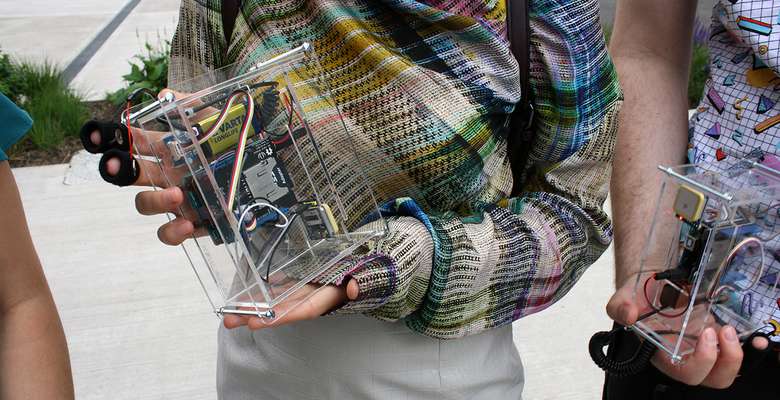
- New alliances
Drawing on cybernetic theory of communication our work explores the ecological foundations of digital participation aiming at offering a better understanding of the complex nature of collective feedback. We explore these ideas through a design-research practice that uses biometric sensing, live data visualisation and generative design, with an approach that develops novel aesthetics emerging from the collaboration of matter, technological infrastructures and human behaviours.
Our proposal is structured through an initial workshop that will be customised to a specific site on recommendation of the hosting institution. The workshop will engage the local community in an experiment of emotional data collection (Galvanic Skin Response), exploring mechanisms of real-time reflexive awareness and its potential to affect architectural scale open purposive action. The results will constitute an open archive of sensual knowledge that will be exhibited in the form of a multimedia installation.

Live Galvanic Skin Response (GSR) data visualisation. Image from the HeartBit Walk, part of the London Festival of Architecture 2018. An Arduino apparatus was developed to measure GSR - a change in the electrical resistance of the skin caused by emotional stress - and GPS signals, and it was worn during explorative group walks in Hackney Wick. The detailed emotional insights were visualised during in-situ group discussions as situated three-dimensional models and dynamic animations.
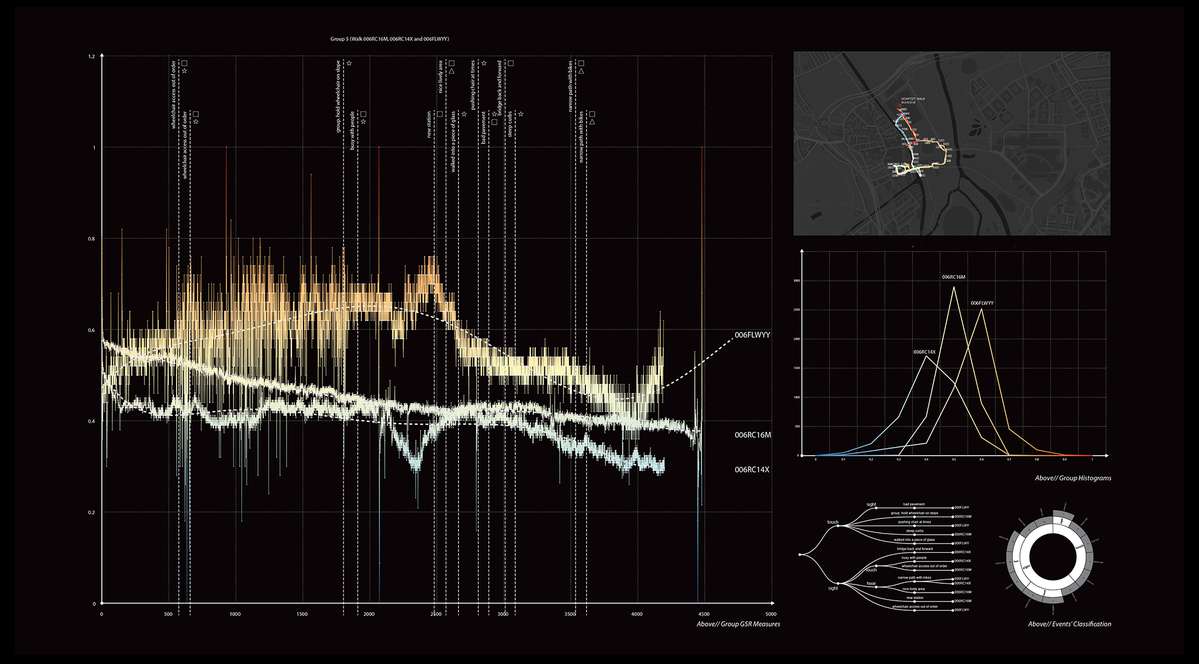
Group data categorization, image from the HeartBit Walk. The accidents perceived by each participant were classified, through an identification of the primary and secondary sense. Six group walks were analysed and rendered through overall maps and the overlays of individual GSR data and recorded events. In the overall, these visualisations compose a rich visual index that by rendering the diverse perspectives with granular definition offers a multi-scalar photography of the experience.
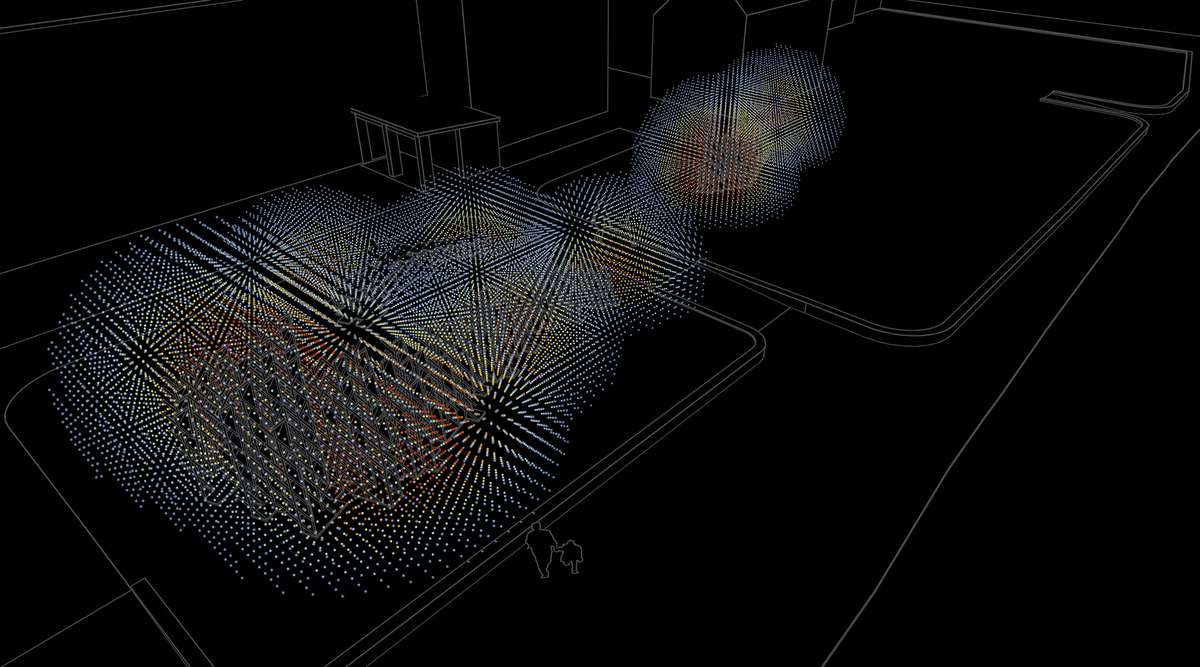
Situated GSR visualisation (artistic impression), from our proposal for the Making Places Competition 2019, Waltham Forest. Drawing on the body of knowledge developed for The HeartBit Walks, the proposal designs a detailed residents’ engagement process that makes use of emotive mapping and staged interviews for the design of a sculptural large-scale trellis that following biophilic design principles integrates sound absorption and air purification properties.
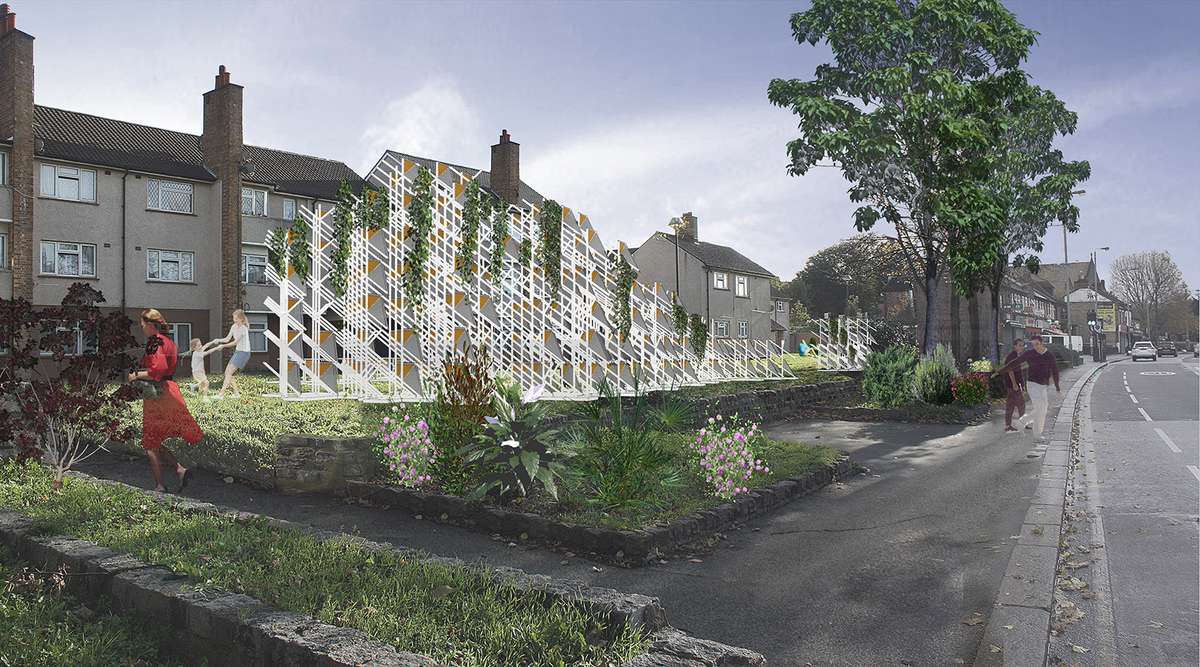
Proposal for the making Places Competition 2019, Waltham Forest. Made of lightweight modular galvanised steel components, the system uses clip-on sound absorption panels made of recycled expanded glass granulates while acting as a scaffolding for the growth of ivy-like creepers. The proposal was driven by the request of the brief for solutions to the high levels of sound and air pollution on site.
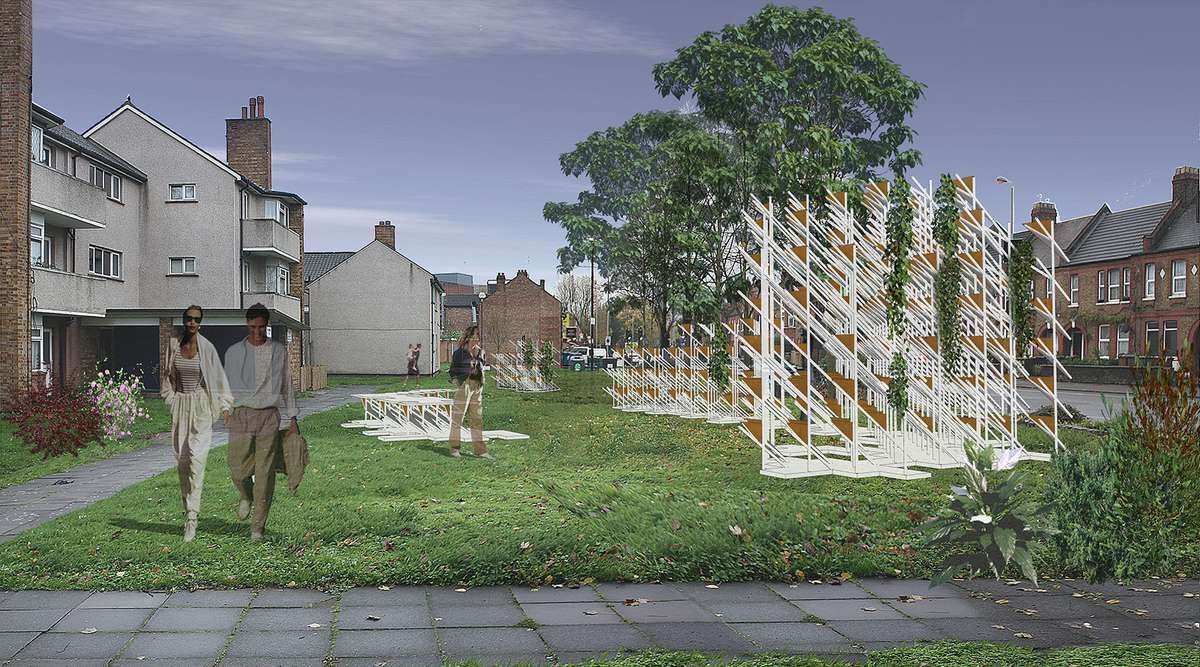
Proposal for the Making Places Competition 2019, Waltham Forest. With an ecological angle that places humans and their living and non-living co-species as the network of actors that collaboratively addresses the production of space, the Transindividual Urbanism project proposes biometric sensing as a tool for the systematic deconstruction of the human agency and the reimagination of platforms for group knowledge creation and collaborative decision-making.
Transindividual Urbanism
Transindividual Urbanism

- New alliances
Drawing on cybernetic theory of communication our work explores the ecological foundations of digital participation aiming at offering a better understanding of the complex nature of collective feedback. We explore these ideas through a design-research practice that uses biometric sensing, live data visualisation and generative design, with an approach that develops novel aesthetics emerging from the collaboration of matter, technological infrastructures and human behaviours.
Our proposal is structured through an initial workshop that will be customised to a specific site on recommendation of the hosting institution. The workshop will engage the local community in an experiment of emotional data collection (Galvanic Skin Response), exploring mechanisms of real-time reflexive awareness and its potential to affect architectural scale open purposive action. The results will constitute an open archive of sensual knowledge that will be exhibited in the form of a multimedia installation.

Live Galvanic Skin Response (GSR) data visualisation. Image from the HeartBit Walk, part of the London Festival of Architecture 2018. An Arduino apparatus was developed to measure GSR - a change in the electrical resistance of the skin caused by emotional stress - and GPS signals, and it was worn during explorative group walks in Hackney Wick. The detailed emotional insights were visualised during in-situ group discussions as situated three-dimensional models and dynamic animations.
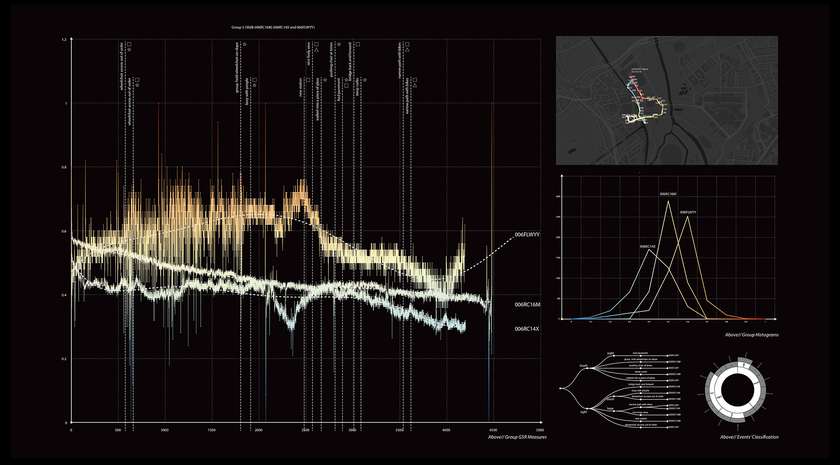
Group data categorization, image from the HeartBit Walk. The accidents perceived by each participant were classified, through an identification of the primary and secondary sense. Six group walks were analysed and rendered through overall maps and the overlays of individual GSR data and recorded events. In the overall, these visualisations compose a rich visual index that by rendering the diverse perspectives with granular definition offers a multi-scalar photography of the experience.

Situated GSR visualisation (artistic impression), from our proposal for the Making Places Competition 2019, Waltham Forest. Drawing on the body of knowledge developed for The HeartBit Walks, the proposal designs a detailed residents’ engagement process that makes use of emotive mapping and staged interviews for the design of a sculptural large-scale trellis that following biophilic design principles integrates sound absorption and air purification properties.

Proposal for the making Places Competition 2019, Waltham Forest. Made of lightweight modular galvanised steel components, the system uses clip-on sound absorption panels made of recycled expanded glass granulates while acting as a scaffolding for the growth of ivy-like creepers. The proposal was driven by the request of the brief for solutions to the high levels of sound and air pollution on site.
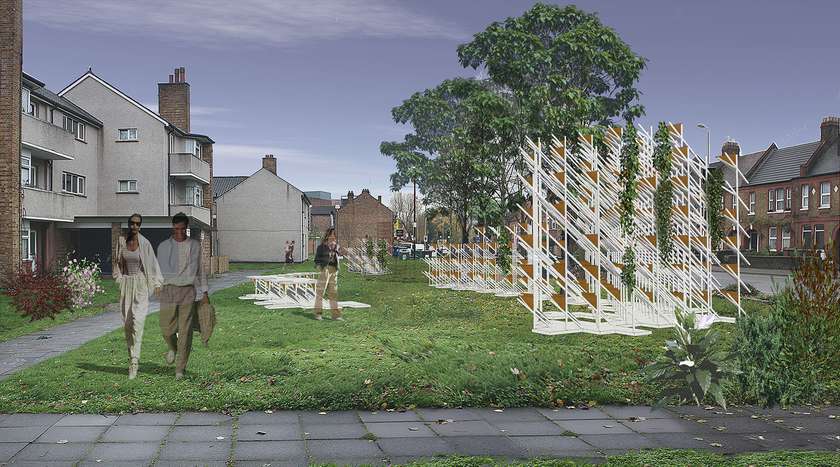
Proposal for the Making Places Competition 2019, Waltham Forest. With an ecological angle that places humans and their living and non-living co-species as the network of actors that collaboratively addresses the production of space, the Transindividual Urbanism project proposes biometric sensing as a tool for the systematic deconstruction of the human agency and the reimagination of platforms for group knowledge creation and collaborative decision-making.